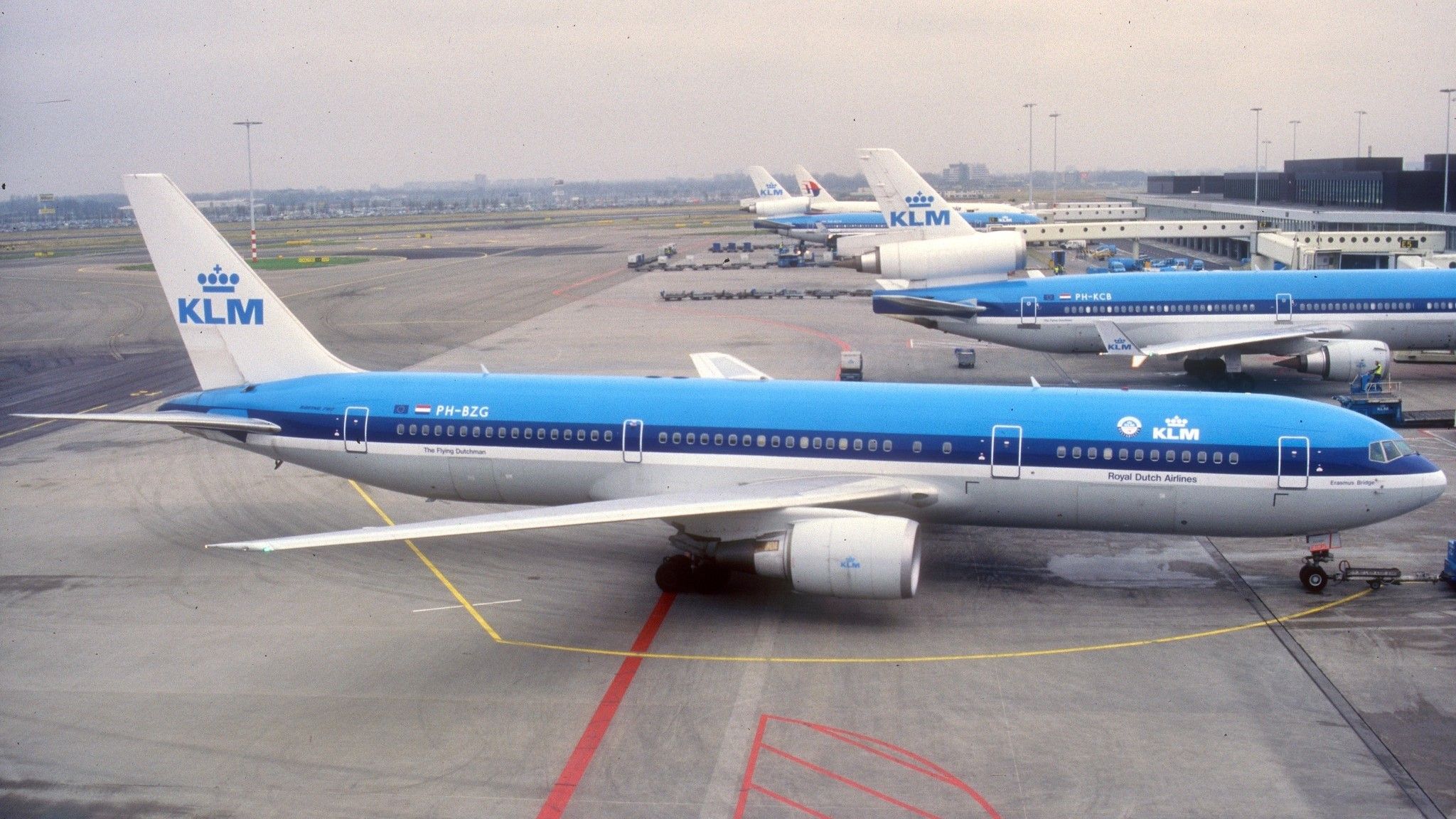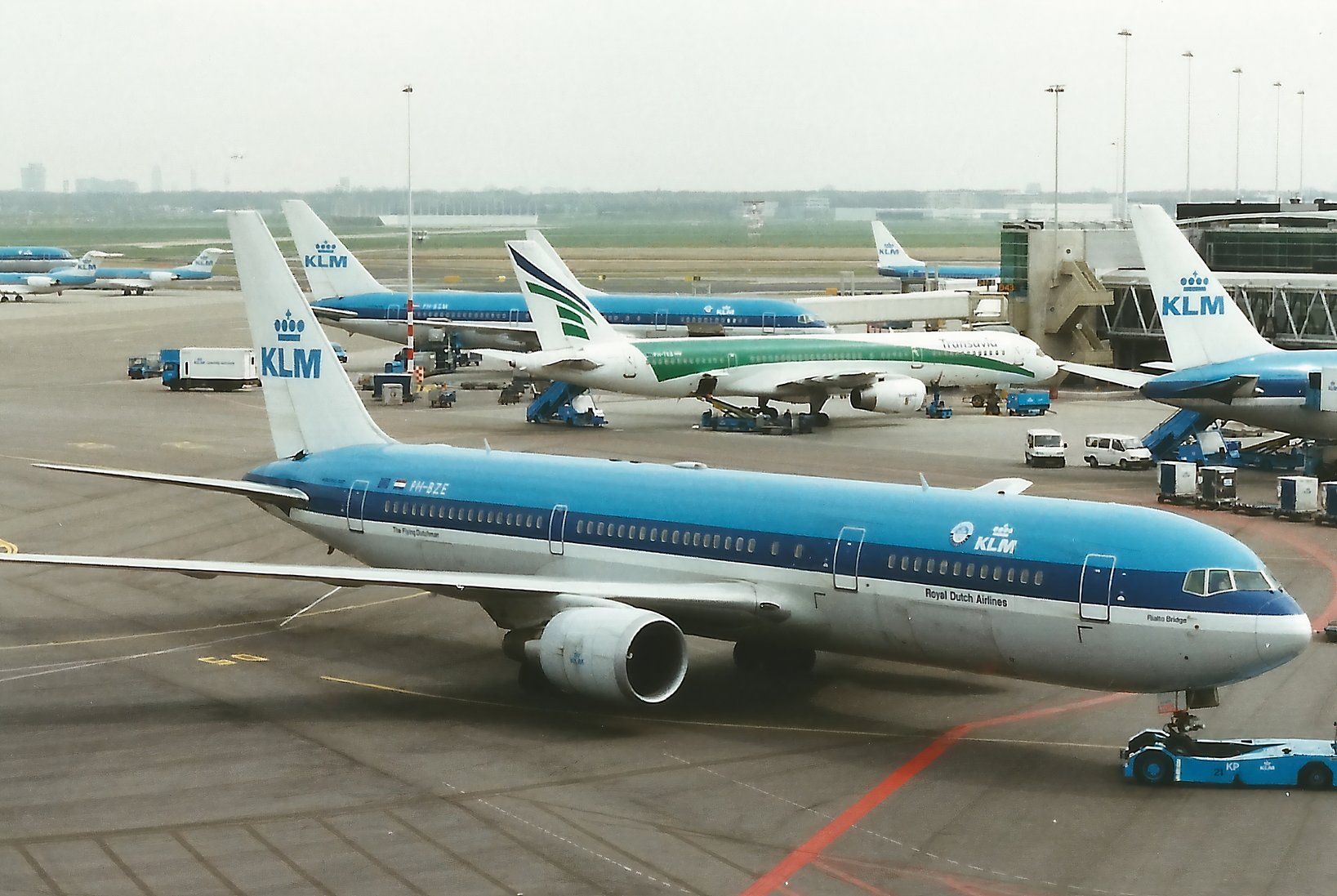Summary
- KLM operated Boeing 767s from 1991 to 2007 before transitioning to 777s and 787s for long-haul flights.
- Most of KLM’s 767 aircraft joined the fleet in the 1990s, with various fates including conversion to freighters.
- KLM’s last 767 aircraft now serves the Government of Equatorial Guinea with a luxurious all-first-class cabin.
Today, Dutch flag carrier KLM predominantly operates its long-haul flights with twin-engine Boeing widebodies, and its intercontinental fleet features aircraft from the US manufacturer’s 777 and 787 ‘Dreamliner’ families. On the other side of the commercial aviation industry’s primary manufacturing duopoly, Airbus A330s are also present. However, did you know that it also previously operated the Boeing 767?
Initial arrivals
According to historical fleet data made available by ATDB.aero, KLM had a total of 13 Boeing 767-300ERs between 1991 and 2007. Of these, three examples joined the Dutch flag carrier during its first years of 767 operations. Its maiden aircraft from this widebody family was PH-MCK, which joined the airline on a brand-new basis in October 1991. However, its tenure at KLM was rather unsuccessful.
Indeed, data from ATDB.aero shows that this particular aircraft ended up being unused at KLM, and it departed the Dutch flag carrier just two months later to serve Austrian operator Lauda Air as OE-LAT. This marked the start of a long career for the aircraft, which made its final flights three decades later for Austrian Airlines, still bearing the same registration. It is now sitting derelict in Marana-Pinal, Arizona.
Of KLM’s remaining 12 examples of the Boeing 767-300ER, three joined the carrier in 1995. According to Planespotters.net, all of these twin-engine widebodies were named after bridges, and the first, PH-BZA Blauwbrug / Blue Bridge, arrived on July 28th, 1995, and left a decade later for Canadian long-haul low-cost operator Zoom Airlines, marking a transition from one blue-liveried carrier to another.

Related
Top 5: The Largest Operators Of The Boeing 767
Passenger and cargo operators continue to rely on the aging widebody.
The other two 767s to join KLM in 1995 were, in an alphabetically logical fashion, PH-BZB (in August of that year) and PH-BZC (October). The former of these transferred to Italian carrier Neos in October 2005, and remains active today as a converted freighter flying for Cargojet Airways under the registration C-FPCJ. Meanwhile, the latter also left for Zoom in January 2006, and also now serves Cargojet Airways.
The rest of the 1990s
All but one of KLM’s Boeing 767s joined the airline in the 1990s, which meant that, after the three 1995 arrivals and the one short-lived 1991 tenure, there were still eight more to come before the turn of the century. Of these, the majority came onboard in 1996, with five new arrivals during this year. These five 767s joined KLM between March and October of 1996, and all served the airline for a good 10 years.
Their departures in 2006 were spread across the year, ranging from March to December. After leaving, two flew for Aeroflot, with one apiece going to Ethiopian, Neos, and North American Airlines. Of these aircraft, only one (PH-BZD) has been taken out of service, with the other four still active today at the ripe old age of 28 years. All four are now freighters, with one at Georgian Airlines and three at Amazon.

Related
50 Active Examples: These Are The European Carriers Flying The Boeing 767 In 2024
Austrian, Icelandair and TUI Fly all feature.
Of KLM’s remaining three 1990s deliveries, two (PH-BZI and PH-BZK) came along in 1997. These aircraft’s fates were similar, namely in that they both joined Kazakhstani flag carrier Air Astana in 2007. Unlike KLM’s other former Boeing 767-300ER aircraft, this pair both still fly passengers, specifically for Azur Air. When flying for KLM, these aircraft had 30 business class and 190 economy class seats onboard.
Meanwhile, the final Boeing 767-300ER to join KLM in the 1990s bore the registration PH-BZM, and the name Pont Garibaldi / Garibaldi Bridge. After arriving at the airline in February of 1999, this aircraft served the Dutch flag carrier for a comparatively short time, departing in 2007 for Malev Hungarian Airlines. It now flies cargo for Amazon Air on lease from Atlas Air, bearing the registration N1229A.
The final example
The last 767 to join the KLM fleet bore the registration PH-BZO, and arrived brand-new on February 1st, 2000. Its name during its spell at the Dutch flag carrier was Karmsund Bru / Karmsund Bridge. After a relatively short tenure at KLM, the aircraft departed at the end of 2006, serving the likes of Privatair and GEASA before moving on to CEIBA Intercontinental in the African nation of Equatorial Guinea.
This particular aircraft has arguably had the most interesting post-KLM career, as, rather than flying passengers on regularly scheduled commercial flights, ch-aviation notes that it now serves the Government of Equatorial Guinea. For this reason, it is fitted with a luxurious cabin configuration that consists solely of first class seats, with just 50 of them onboard, marking a far cry from the plane’s KLM days.
How did KLM use the Boeing 767?
Looking at historical scheduling data made available by Cirium, an aviation analytics company, we can get a better idea of the sorts of routes on which KLM deployed its 767s. For example, in 2004, the Dutch flag carrier scheduled 9,534 flights with the type, collectively offering grand totals of 2,097,480 seats and 6,084,021,900 available seat miles (ASMs). That year, its top destinations for the type included:
- London Heathrow (LHR).
- Accra (ACC).
- Atlanta (ALR).
- Newark (EWR).
- Washington DC (IAD).
Did you ever fly on one of KLM’s Boeing 767s? If so, how did they compare to the Dutch flag carrier’s present long-haul offering? Let us know your thoughts and experiences in the comments!



.jpg)